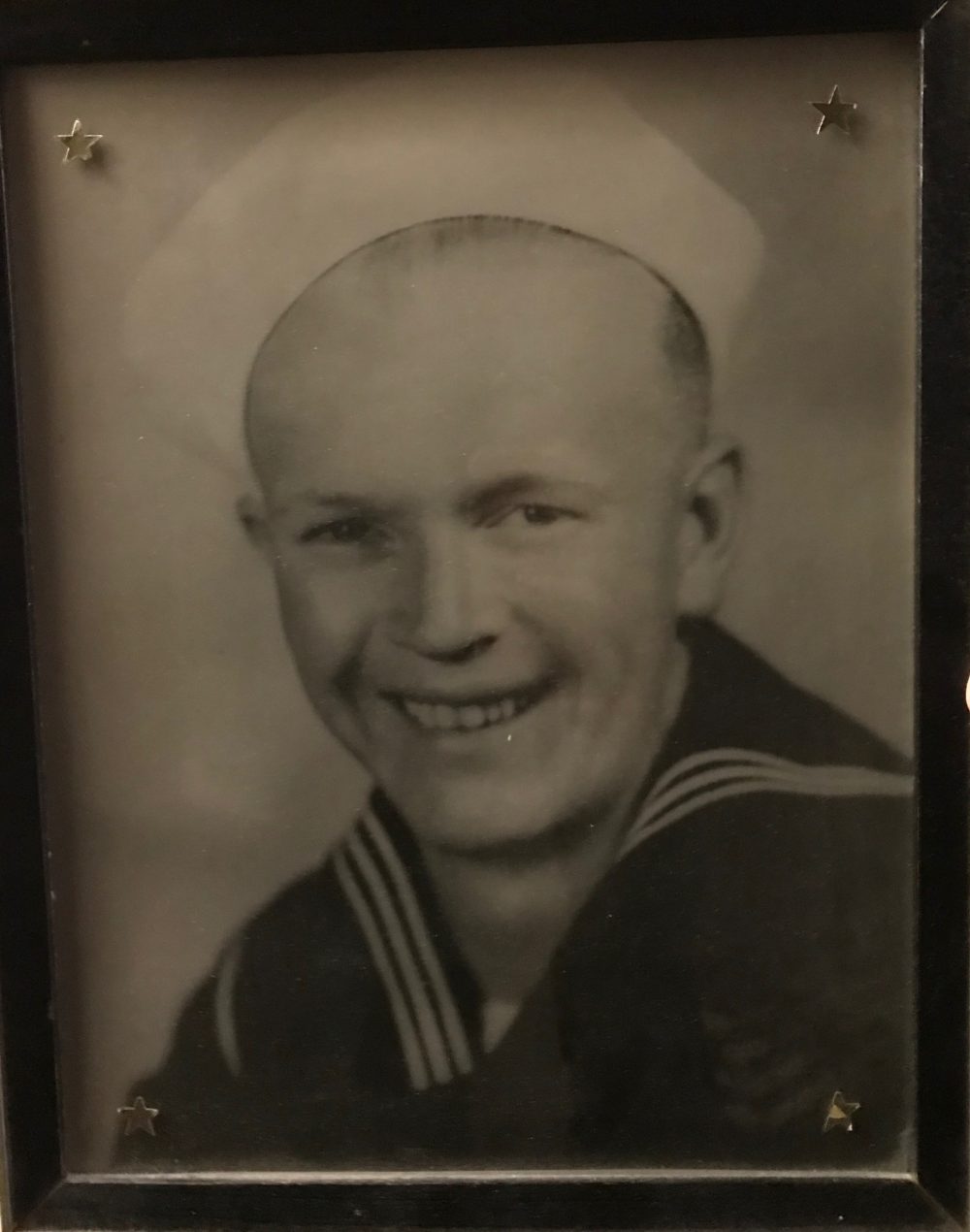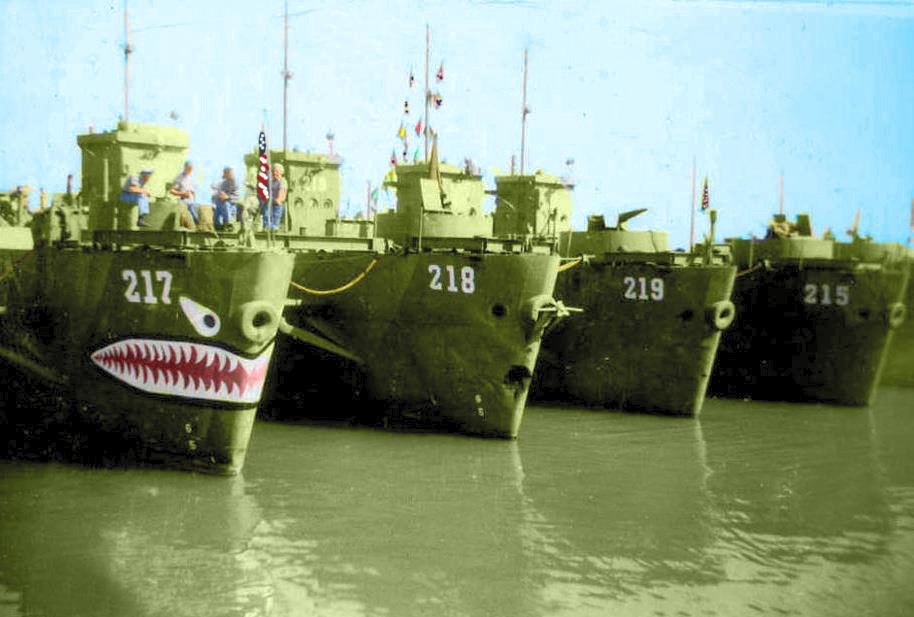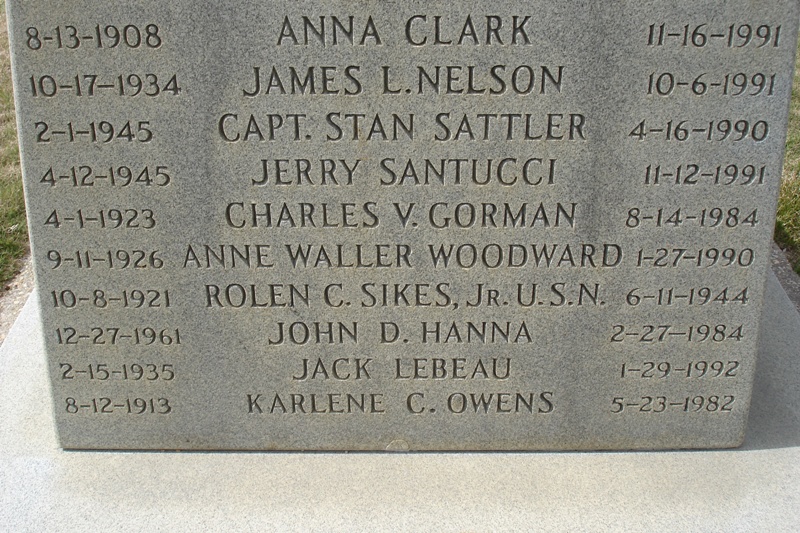Motor Machinist’s Mate First Class Rolen Clarence Sikes

- Unit: LCI-L-219
- Service Number: 2729078
- Date of Birth: October 8, 1921
- Entered the Military: July 9, 1942
- Date of Death: June 11, 1944
- Hometown: Pensacola, Florida
- Place of Death: off the coast of Utah Beach, France
- Award(s): Purple Heart, Bronze Star
- Cemetery: Tablets of the Missing. Normandy American Cemetery, Colleville-sur-Mer, France
Mentored by Ms. Jeannine Meis
Leon High School
2017–2018
Early Life
Background
On October 8, 1921, Rolen Clarence Sikes, Jr. was born as the only child to Alice and Rolen C. Sikes, Sr., in Pensacola, Florida. Growing up in the bustling fishing town of Pensacola, Rolen C. Sikes, Jr. was exposed to marine industries from an early age. Sikes’ father worked as a motion picture operator at the Sers Theatre through 1930; he then switched to become an electrician in 1935.
Eventually, Alice and Rolen Sikes, Sr. separated, but continued to live with one another through the financial hardship of the Great Depression. The family moved to various homes or lived with relatives in fishing towns throughout the Florida panhandle, finally settling down in Destin, Florida, where Sikes completed his high school education and became an apprentice to his uncle, a marine mechanic.
Enlistment
By July 1942, Petty Officer Sikes was 20 years old and enlisted in the U.S. Navy in Birmingham, Alabama. Although very little documentation still exists on Sike’s pre-war years, surviving family members speculate that a major motivator behind his enlistment was his father, who served in the U.S. Navy during World War I. His father enlisted in 1915 and served on the USS Pennsylvania and USS Vermont as a ship cook until the war’s end on November 11, 1918. He was finally discharged on July 18, 1919.

Homefront
Destin, Florida was a compact fishing town located on a narrow peninsula that separates the Gulf of Mexico and the Choctawhatchee Bay. It was founded in 1845 by a Connecticut fisherman, Captain Leonard Destin, and four other vital families, the Marlers, Maltezos, Davises, and Shirahs. The population of Destin remained low until the construction of Route 98 in 1934. The arrival of electricity in the 1940s brought limited tourists, but it was not until the 1980s that Destin experienced a construction boom and became a tourist destination. Throughout the 1930s and 40s, Destin was a very close-knit community tied to the bounty of the sea.
Destin’s isolated location on the Florida panhandle was capitalized upon during World War II. Several armed force bases were built on the plentiful land nearby, including Eglin Air Force Base by Valparaiso in 1935, Tyndall Air Force Base near Pensacola in 1941, and Camp Gordon Johnston just outside Carrabelle in 1941, which was an essential training ground for D-Day. The expanse of wide, uninhabited beaches of the Florida panhandle allowed over 250,000 soldiers to experience crucial amphibious training before embarking in amphibious assaults in North Africa, Normandy, or Japan.
Military Experience
Training
After Petty Officer Sikes enlisted, he trained for a mere four months before engaging in combat. His initial recruit training was six weeks at the United States Naval Training Station (USNTS) in San Diego, California. He then spent eight weeks at Navy Training Station (Diesel) at the University of Missouri in Columbia. Petty Officer Sikes spent his final three weeks of preparation at Norfolk Navy Yard Amphibious Training Base in Portsmouth, Virginia. By mid-November 1942, he was transferred to Solomons, Maryland and assigned to the ship Landing Craft Infantry Large 219, (LCI(L)-219) as Fireman First Class.
Within days, the crew of LCI(L)-219 was en-route to Boston, Massachusetts. They were headed for North Africa to participate in the Allied invasion of Italy, and they wasted no time. By January 1943, Petty Officer Sikes and LCI(L)-219 headed south along the east coast of the U.S. and then directed to cross east over the Atlantic. Petty Officer Sikes used this time to train for a different path in the Navy and was promoted on February 1 to Motor Machinist’s Mate Second Class. A violent storm struck the Caribbean in late February, and rough seas caused extensive damage to the motors of LCI(L)-219. Two crew members drowned.
After slow speeds the rest of the way to the Port of Bizerte in Tusia, Petty Officer Sikes and the crew of LCI(L)-219 spent months repairing the damaged motors of the ship and training with the 5th Army.
Campaigns
Petty Officer Sikes and LCI(L)-219 served in two campaigns during World War II: Italy and Normandy. The preparations for the invasion of Italy occupied most of 1943, and the ship commuted between the Port of Bizerte and Gela, Sicily for eight months, shuttling men and materiel to designated areas. During this time, Sikes completed his training for promotion to Motor Machinist’s Mate First Class, but by January 1944 the fighting began and thoughts of promotion were swept aside. LCI(L)-219 engaged in the Battle of Anzio, safely shuttling Landing Craft Vehicle Personnel (LCVPs) and Landing Craft Mechanized (LCMs – landing craft designed to carry vehicles) to the mainland beaches of Italy.
Although there were extensive air raids on U.S. ships during the campaign, LCI(L)-219 was more fortunate than most, and Sikes played an active role in the safety of his ship and those of other seamen. On January 29, the HMS Spartan was stuck by a German glider bomb off of the coast of Anzio. On orders, Petty Officer Sikes assisted in rescuing 90 of the 104 survivors from the ship. Two weeks later, rough seas caused LCI(L)-219 to lose its bow anchor. Petty Officer Sikes spontaneously led crew members in saving the ship from being scuttled on shore. His bravery and quick thinking drew the attention of his superior officers.
After the Battle of Anzio, LCI(L)-219 was stationed at American Beach in Sicily, continuing to make trips to Anzio to shuttle supplies throughout February and March. During one of these trips, Sikes proved himself once again. The injured LST-348 was spotted sinking quickly after being hit by a German torpedo. He swiftly alerted others, launched a vessel, and started rescuing some of the 72 survivors. His superior officers recommended Sikes and several additional crew members for the Silver Star. Sikes was awarded the Bronze Star posthumously for his work saving the crew members of the LST-348.
D-Day
On June 6, 1944, LCI(L)-219 joined the 17th wave on Utah Beach. They shuttled troops and materiel between Omaha and Utah Beach. It was not until June 11, 1944 that LCI(L)-219 was struck for the first time. Around 3:45 a.m., a German air raid bomb landed ten feet from the hull of of the ship. The generators caught fire, and many of the crew were injured. As the ship started to rapidly sink, the surviving crew members were rescued by the ship PCI-291. However, several crew members were never rescued or found, including Sikes.

Eulogy
The cost of sacrifice surrounds us today at the Normandy American Cemetery. It is exemplified by every soldier who set foot on these shores – with every injury, every headstone, and every drop of blood claimed by the sea. My silent hero, Motor Machinist’s Mate First Class Rolen Clarence Sikes, Jr., was the definition of sacrifice: a young man lost to war, his body never laid to rest among his comrades, his story forgotten with the passage of time and the distance of two continents.
From his humble roots in rural Depression-era Florida to his time in the Navy, Petty Officer Sikes led a life of hard work and perseverance. His steadily increasing marks in the U.S. Navy, his continuous perfect conduct, and the risks he took to save the lives of others demonstrated that our Silent Hero was not one to be content with mediocrity. He put the welfare of his friends and the mission of his country before his own self-preservation. When LCI(L)-219 sunk off the coast of Omaha Beach on D-Day +5, Petty Officer Sikes lost his life with it. Although investigators initially believed that he was among the patients sent to England to be treated for injuries, after almost a year, his parents finally received the letter they had been dreading.
Today, we bring Motor Machinist Mate First Class Rolen C. Sikes, Jr.’s life back from the sea. We stitch the pieces of his story together, linking his marker in Normandy to the marker erected in Destin, Florida over 4,500 miles away. We thank you on behalf of all those whose lives you preserved and enriched. May you rest in the peace you helped create.

Reflection
The Normandy: Sacrifice for Freedom® Albert H. Small Student & Teacher Institute has truly shaped my life in a way that words can not fully express. I am so immensely grateful to have been given the opportunity to further learn about World War II and familiarize myself with my Silent Hero, Petty Officer Sikes. It was exhilarating to be able to learn with such an intelligent, appreciative group of people who continue to shape me into the type of person I strive to be.
Learning more about D-Day, the lives of German soldiers, and the general history of World War II through lectures at George Washington University was easily one of the more meaningful aspects of this trip. We were able to sit through three lectures a day taught by authentic professors, including Dr. Long. These lectures were not only intriguing but also covered various topics throughout World War II and D-Day that many students are not fully taught in school.
Visiting museums and monuments in both Normandy and Washington D.C. was also a great experience. One museum that sticks out from the others was the United States Holocaust Memorial Museum. I had previously visited it with my school; however, with the knowledge I had acquired about World War II with the Normandy Institute, I was able to view exhibits in a whole new way then I did before.
On the trip, some of the more somber moments could ultimately be extremely hard, but those moments were some that mattered the most to me. For instance, one that stands out more than the others was presenting my eulogy at the Normandy American Cemetery. The moment we stepped through the gateway of the Normandy American Cemetery, it was as if a weight was simultaneously being lifted off, and forced onto my shoulders. To see the thousands of graves of young men who died fighting to insure peace for others brought out many emotions among the group. I received this same feeling when we visited Omaha and Utah Beach, the two beaches that my silent hero visited.
This experience has undoubtedly shaped me into a better person than who I was before we began this journey in January. It has been one that I do not ever plan forgetting, and I cannot begin to thank both the Normandy Institute and the National History Day teams for all they have done for me.
Bibliography
Primary Sources
Adair, Sr., Ken. LCI(L)-217. Photograph. NavSource Online Amphibious Photo Archive. 1943. www.navsource.org/archives/10/15/150219.htm.
Blue, Kathy Marler. Personal Interview. March 2018.
Florida. Okaloosa County. 1920 U.S. Census. Digital Images. ancestry.com.
Florida. Okaloosa County. 1928 Divorce records. Digital Images. ancestry.com.
Rolen C. Sikes, Jr., Individual Deceased Personnel File, Department of the Navy
Rolen C. Sikes, Jr., Official Military Personnel File, Department of the Navy, Records of the Bureau of Naval Personnel, RG 24, National Archives and Records Administration – St. Louis.
Secondary Sources
Ambrose, Stephen E. D-Day June 6, 1944: The Climactic Battle of World War II. New York: Simon and Schuster, 1994.
Florida Memory Project. “Rolen Sikes, World War I.” Florida. Military Dept. Accessed June 3, 2018. www.floridamemory.com/items/show/226864
Mettee, Vivian Foster, and Shirley L. Flowers. “And the Roots Run Deep:” A Short History of Destin. Destin: City of Destin, 1985.
“Rolen C. Sikes, Jr.” American Battle Monuments Commission. Accessed January 26, 2018. www.abmc.gov/node/494663#.W4GCgc5KjIU.
Weinberg, Gerhard L. World War II: A Very Short Introduction. Oxford: Oxford University Press, 2014.
Wieviorka, Olivier. Normandy. Cambridge: The Belknap Press of Harvard University Press, 2008.
This profile was researched and created with the Understanding Sacrifice program, sponsored by the American Battle Monuments Commission.

